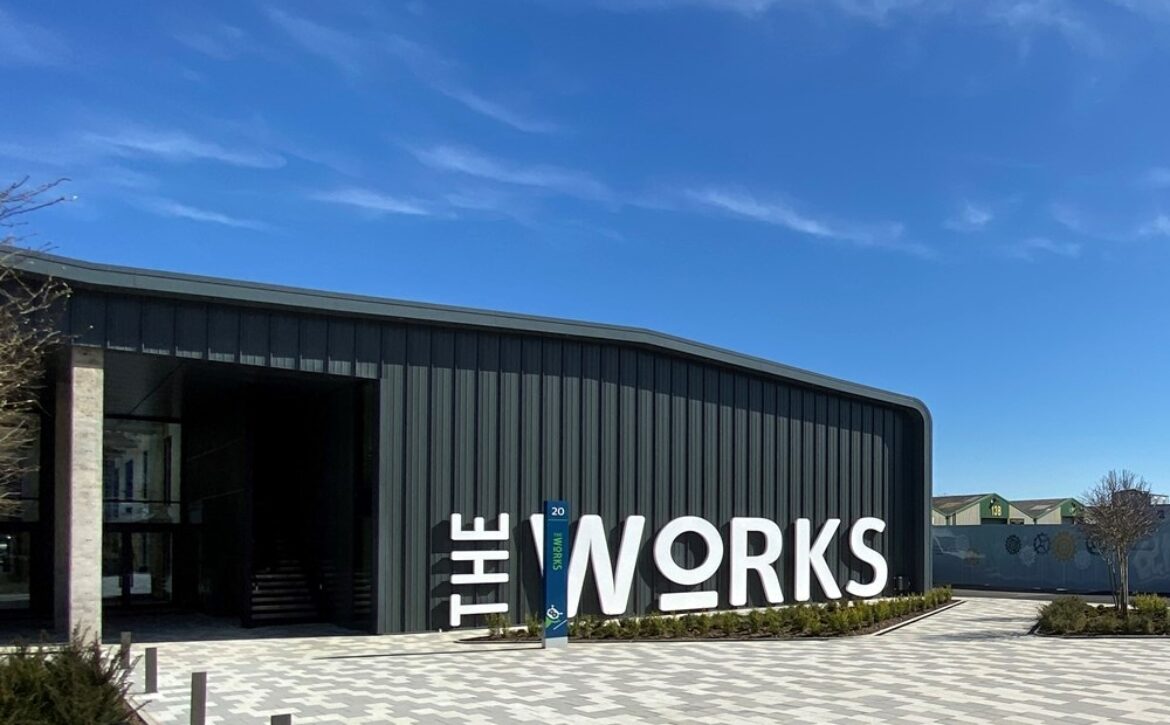Key takeaways
- Private equity capital has become a more prominent source for financing global commercial enterprise, and returns on that capital, less tied to beta than those from public markets, have helped raise the profile of private equity investing as an asset class around the world.
- We see five ways in which private equity investing can continue to play a positive role in the years ahead, contributing to the betterment of investors, businesses, employees, pensioners, and economies across the globe.
Our economy is moving away from public companies
Amsterdam’s Stock Exchange was founded in 1602, and the Dutch East India Company was the world’s first listed public company.¹ While the number of stocks trading on public exchanges around the globe increased over the next four centuries, fewer companies are going public these days. There were 486 U.S. initial public offerings during 1999, but only 190 such offerings in 2018.² In fact, the total number of listed U.S. companies has fallen by over 40% since the late 1990s.³
Fewer companies are going public these days
Number of U.S. publicly listed companies, 1980-2018
Meanwhile, the number of private equity-backed companies is on the rise and now dwarfs the number of companies listed on U.S. public equity exchanges—a trend that’s indicative of what’s happening around the world. Globally, there were 9,000 private equity deals done in 2018, compared with just 1,700 in 2001.⁴ The growth of private equity assets under management has been brisk, too, especially in Asia, which now accounts for one-quarter of the global private equity market.⁵
U.S. private equity-backed companies now outnumber listed companies

Unlike a typical public equity shareholder, who has no influence on how a corporation is run, private equity funds often take controlling positions in portfolio companies and become actively involved in setting the strategic direction of these companies. Board control ultimately represents an owner’s call option on management regime change. Even if the owner never has cause to exercise the option, the arrangement tends to align executive teams’ interests with those of the business owners, encouraging all involved to focus exclusively on the opportunities and risks most crucial to the long-term success or failure of the business. Whereas their publicly traded counterparts are frequently plagued by distraction and Wall Street’s fixation on short-term results, well-run private equity-backed companies tend to benefit from an incentive structure and timeline that encourages a management team to deploy its best thinking and energies on the two or three most meaningful objectives likely to drive long-term value creation. Private equity is about pairing talented investors with exceptional management teams and using their collective wisdom to get the job done together.
Private equity assets have more than doubled in less than a decade
Global private equity assets, 2009-2Q 2018 ($U.S. billions)

There are a number of factors behind the shift from public to private capital, yet we can point to two changes in U.S. law that played a role in a multi-year trend that continues today. The Sarbanes-Oxley Act of 2002, for example, a response to the wave of accounting fraud scandals epitomized by Enron’s collapse, made reporting requirements for U.S. public companies more onerous than they had been before. A decade later, the U.S. Jumpstart Our Business Startups (JOBS) Act, a different type of law designed to address a different problem, allowed private companies to have up to 2,000 shareholders (an increase from only 500) before being required to disclose their results. Both Sarbanes-Oxley and JOBS had unintended knock-on effects, providing less incentive for companies to go public and more incentive for them to remain in, or return to, private hands. It’s particularly true for capital-light, R&D-intensive firms that wish to keep their proprietary intellectual capital out of view of competitors and the public spotlight alike. And the global economy is seemingly shifting such that most companies now see their intangible assets as more important than their tangible assets.⁶
“Private equity is about pairing talented investors with exceptional management teams and using their collective wisdom to get the job done together.”
Global central banks have also helped fuel the transition in recent years, as low interest rates have made it easier for private equity investors to transact with borrowed funds. More than a decade after the depths of the global financial crisis, policy rates remain at or near record lows around the world, and an abundance of relatively cheap debt with issuer-friendly terms is still available to finance acquisitions.
The intersection of private equity and alpha
While legislative, macroeconomic, and monetary policy developments have helped private equity capital become a more prominent source for financing global commercial enterprise, the returns on that capital have helped raise the profile of private equity as an investment asset class around the world.
Some of the most sophisticated institutional investors have been shifting portfolio allocations toward private equity and away from public equities for years. For example, the dollar-weighted average allocation of all U.S. higher education endowments to private equity more than tripled (from 3% to 10%) between 2002 and 2018, while the allocation to domestic public equities declined by over half (from 37% to 16%) during that period.⁷ Today, roughly 60% of private equity investors are university endowments, charitable foundations, and employee pension funds.⁸
“… private equity may still represent the brightest light in a dimming universe of investment prospects hampered by today’s high asset valuations and low yields.”
So far, the allocation shift toward private equity has worked out in favor of these institutions and their beneficiaries. Global private equity net asset value has grown by a factor of 7½ since 2002, compared with a 3½-fold increase in public equities’ market capitalization over the same period.⁴ Following this impressive outperformance run, private equity may still represent the brightest light in a dimming universe of investment prospects hampered by today’s high asset valuations and low yields. The reason is that, relative to listed public equities, regression analysis reveals that private equity performance has been driven more by alpha and less by beta, “and equally as important, is that alpha is generally less correlated than beta.”⁹
Private equity is driven less by beta and more by alpha
Alpha and beta vs. MSCI ACWI (Gross USD), 2000-2018¹⁰
Source: Cambridge Associates, eVestment, Bloomberg, KKR, 2019.
Whereas the current beta embedded in public markets’ capitalization is by definition skewed toward past winners, we believe today’s private equity deal counts are more indicative of future prospects. Investors around the world have taken notice. That’s likely one reason the recent growth of private equity assets under management has been so rapid, not only in North America and Europe, but also in the Asia-Pacific region, now home to a quarter of the world’s private equity market.⁵
The illiquidity premium—the reward investors earn for bearing the risk of holding assets that can’t be easily traded—represents a meaningful prospective source of private equity alpha. It may be an attractive feature to institutional investors with long-dated liabilities, such as insurers and pension plans. The largest U.S.-based investor in private equity, a public pension plan in California, isn’t satisfied with its existing allocation to the asset class. “We need private equity, we need more of it, and we need it now,” according to its chief investment officer.³ Even if private equity isn’t poised to match its past results, many investors still view it as the most promising asset class on offer today. In fact, 95% of a representative sample of 400 institutional investors surveyed in the United States plan to either increase or maintain their long-term allocations to the asset class.³
Private equity investors plan to increase or maintain their allocations
Institutional investors’ private equity long-term allocation plans, 2018

Flexibility and patience can be additional sources of alpha for private equity investors who carefully choose portfolio companies offering the potential of multiple ways to win, and being able to pivot as developments warrant can prove highly valuable. Characteristics of promising investment opportunities may include companies with:
- High-quality management teams
- Strong recurring revenues and organic earnings growth in an industry enjoying structural tailwinds
- Businesses that operate in industries with strong barriers to entry
- Low capital intensity
- High operating leverage—the ability for each incremental dollar of revenue to flow through as fully as possible to the bottom line, with margins expanding along with the scale of business
While these characteristics are good indicators of a successful business, overbidding for such traits is an ever-present pitfall. If a private equity sponsor pays too much for its portfolio companies, it may struggle to create value for investors. Consequently, it makes sense to look for managers who have good judgment about the inherent value of a particular business and extensive experience executing strategies that would make the business more profitable—and, by extension, more valuable.
Private equity’s public relations problem
Although the industry is maturing, we continue to see private equity participants get criticized for behaviors that were more prevalent during the industry’s infancy, evoking a popular narrative rife with corporate raiders, hostile takeovers, and junk bond-financed mergers and acquisitions. Barbarians at the Gate (1989), Den of Thieves (1992), and The Predators’ Ball (1988), and other books relayed the most egregious examples of the day’s dubious practices.
In the late 1980s and early 1990s, many industry firms spearheaded deals by contributing equity capital representing only 10% to 20% of the entire enterprise value, borrowing the rest of the funds required to close the transaction. This left many private equity-backed companies overleveraged and with little financial flexibility to weather a downturn in the economic cycle. The business failures, bankruptcy filings, and personnel reductions that inevitably followed continue to haunt the industry’s reputation today.
Private equity has come a long way since then. Rather than relying on abrupt practices, such as asset stripping and employee layoffs, to cut costs and turn a quick profit, private equity investing has become more focused on driving growth, improving competitive positioning, and focusing on sustainable, long-term value creation. We’re seeing many portfolio companies scaling their businesses, executing thoughtful merger-and-acquisition plans to drive top-line growth, and generating value where it didn’t exist before. In our experience, the more recent reality debunks the popular narrative of frequent bankruptcies, unmet pension obligations, and job destruction—stories of high-profile deals gone awry that marked private equity’s early days. Further, in the current climate, it’s not uncommon for owners to contribute 40%, 50%, or even 60% of the total enterprise value of an acquired business in their own equity capital, which lessens the need for borrowed money and increases the financial flexibility of a firm to negotiate the next recession, whenever it arrives.
“In many ways, private equity has become a driver of efficient, responsible, and sustainable capital allocation, helping investors, companies, and their communities.”
A growing force for building corporate value
Our experience provides a counterpoint to the negative private equity narrative. In many ways, private equity has become a driver of efficient, responsible, and sustainable capital allocation, helping investors, companies, and their communities. While this may be oversimplifying the ways in which private equity firms add value to portfolio companies, we’ve observed countless examples in each of the following generic strategies that have created value for investors in private equity funds.
First institutional capital may work well in the current environment
Investors vs. fund managers: views on private equity pricing, 2018¹¹

- First institutional capital—Many successful business founder-owners eventually find their personal wealth concentrated in the equity of their own businesses, and they often want to diversify their net worth without forfeiting their involvement in what they’ve worked so hard to create. In addition, this concentration of considerable wealth in a single asset can lead the owner-manager to adopt a posture of risk avoidance that hampers further growth. For example, opportunities to expand into a new geography or launch a new product line are dismissed because they’re perceived as uncertain. These owner-managers may be gifted entrepreneurs who build something out of nothing, but it takes a different set of skills and experience to take a mature business to the next level. At a certain point they need liquidity, wealth diversification, expertise, and partnership to allow them to continue investing in the future. For them, selecting the right buyer is as important as getting the price right. For private equity firms that can build rapport with the owner and describe an attractive plan for further wealth creation, there is an opportunity to acquire a good asset at a reasonable price. In addition, many of these businesses offer the proverbial low hanging fruit: clear value-creation opportunities that have been neglected or underappreciated by the founder. When owners are obsessed with not losing what they have, it’s hard for them to think about growing their businesses. These types of situations can work well for private equity investors and founder-owners alike, particularly in today’s market, where valuations are reasonably high.
- Buy-and-build strategies—A growing contingent of private equity funds has been contending with higher deal multiples—good if you’re selling but not good if you’re buying—through what’s known as a buy-and-build approach, “an explicit strategy for building value by using a well-positioned platform company to make at least four sequential add-on acquisitions of smaller companies.”⁵ A fund purchases a promising company and builds it to scale through the acquisition of a series of smaller, cheaper companies within the same industry or in a related industry. Since smaller companies tend to change hands with lower earnings multiples than larger companies do, a buy-and-build strategy allows the fund to capture the multiple arbitrage—buying businesses at relatively low multiples and integrating them into a larger organization with increased operating leverage that merits a higher multiple. However, the integration risks are real, and investors sometimes underestimate them. Very few private equity firms get high marks in the nuanced art of marrying divergent corporate cultures into a unified whole.
- Good-to-great approach—As the private equity markets have grown, it’s not uncommon to see the sale of a business from one sponsor to another. Industry observers sometimes wonder about the advisability of this for the buyer; if the business was professionalized and grown by the selling private equity firm, what value remains to be captured by the buying private equity firm? Sponsor-to-sponsor transactions aren’t inherently riskier, provided that the buyer has a credible value-creation plan for the business and plans to improve upon the gains made by the seller. The buyer takes a good business and makes it great by adding to the company’s capabilities. This can take many forms, such as expanding internationally, upgrading management systems, and tapping top-grade managerial talent. This strategy isn’t only carried out though sponsor-to-sponsor transactions, it can also apply to buying a truly strong founder-owned business or a business acquired in a corporate carve-out transaction.
- Scratch-and-dent opportunities—Attractive private equity targets aren’t always perfect; sometimes they’re businesses with something that’s broken or complex, which causes the business to trade at a meaningful discount to its potential value. Firms that can repair these businesses and remove the elements of complexity can own a business that comes out the other end of this process displaying stronger growth and improved valuation metrics. Executing this strategy requires the right types of operating talent to make fundamental, often disruptive, changes to the portfolio company’s operations. These turnarounds can be difficult, but the rewards for success can be considerable. In an extreme example, one private equity firm was provided with an opportunity to acquire a broken business in a corporate carve-out transaction. The corporate seller found itself losing millions of dollars per year and could not identify a way to return the business to profitability. Ultimately, the corporate seller paid the private equity sponsor to take it off the seller’s hands. After executing on a series of identified initiatives and strategic acquisition, the private equity firm was able to return the company to profitability, representing a unique case of what we would call scratch-and-dent investing.
- Distressed-for-control investing—Distressed-for-control investing involves exchanging the debt securities of a target business for equity securities in the same company—generally a controlling ownership position. This form of value investing can be rewarding when a fundamentally sound business becomes overleveraged to the point that it can’t meet its current obligations. Sometimes what’s broken in a business can impair its balance sheet, with loan defaults resulting from an unexpected change in the global business environment. An investor in a distressed enterprise has the opportunity to earn an attractive return while rescuing a business that may be on the brink of extinction. A capital-structure-agnostic view helps in these special situations. Private equity investors that have the agility to pursue opportunities across the capital structure can enjoy outsize gains if they select the right part of the capital structure of the right company at the right time. However, this strategy has risks that can’t be taken lightly. It takes years of experience, for example, to understand which securities will control the restructuring, whether or not the debt securities can be exchanged for a controlling position, and, most importantly, to know what to do with the business once you own it.
Conclusion
Today, private equity helps align the interests of owners and management, helps the capital markets operate more efficiently, and spurs productivity growth. Private equity continues to evolve and provide an incubator for ideas that lead to accelerated business growth, new ways to finance businesses, and employment growth—big thinking that contributes to better living standards more broadly. Private equity investing can continue to build this momentum as a growing force for good and play a positive role in the years ahead, contributing to the collective betterment of an interconnected web of company owners, managers, employees, pensioners, and communities throughout the global economy.









